Midweek Review
Economic meltdown: Prez takes refuge overseas, ‘advisors’ face legal action
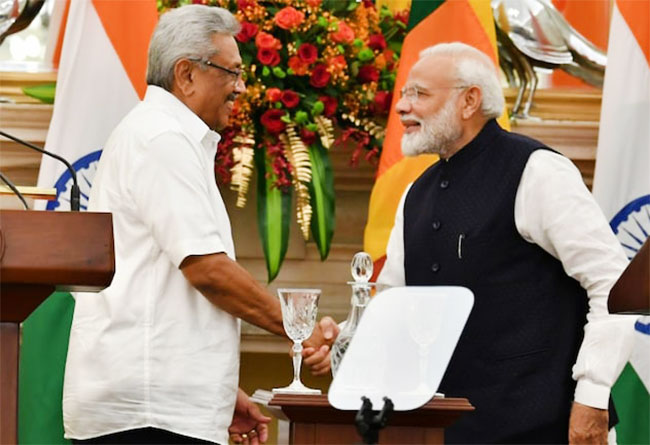
The US denied visa to Narendra Modi in 2005 over his alleged role in murderous rampage in Gujarat three years earlier during his tenure as the Chief Minister of the important Indian state. The US declared Modi would never be issued a visa. The US gradually changed its position as Modi, over the years emerged as the new power. Having won the parliamentary election in May of 2014, Narendra Modi visited Washington in Sept 2014, where he met then US president Barack Obama. The visit received public attention as this was the Indian leader’s first since the US denied him a diplomatic visa to the US for his alleged complicity in 2002 Godhra riots in 2005. Since becoming the Premier, Modi has visited the US seven times. The US response to Modi’s accountability reflects the Superpower’s thinking. Their political, security and economic interests supersedes any other issue. That applies to all major powers. India and China no exceptions.
By Shamindra Ferdinando
India has firmly denied having played any role in facilitating the hasty forced departure, or travel, of 73-year-old former President Gotabaya Rajapaksa from Sri Lanka.
The Indian High Commission said so in a statement issued on July 15 in the wake of Gotabaya Rajapaksa arriving in Singapore, his second stop after initially taking refuge in the Maldives. Based on remarks made by the Spokesperson, Ministry of External Affairs in New Delhi on the previous day, the Indian HC denied coming to the rescue of Gotabaya Rajapaksa.
It would be pertinent to mention that at the time of the forced departure from Sri Lanka, with violent mobs pursuing him, Gotabaya Rajapaksa remained the President and resigned only after reaching Singapore. Therefore, India’s denial that it didn’t have any role in facilitating the departure or travel of former President Gotabaya Rajapaksa from Sri Lanka is questionable. Did New Delhi turn down Colombo’s request to facilitate then President Gotabaya Rajapaksa’s departure? If Sri Lanka didn’t ask India to make way for President Gotabaya Rajapaksa and his wife, Iyoma, what made the Indian External Affairs Ministry to categorically deny facilitating the first family’s departure? Perhaps, both capitals should set the record straight.
Still licking its wounds from the aftermath of the forced Indo-Lanka Accord of July 1987 and the disastrous intervention by the Indian Peace Keeping Force here, perhaps for New Delhi it’s a case of the proverbial once bitten twice shy with Pol Pots here who are generating hysteria in the name of Sri Lankan people’s welfare .
Having comfortably won the last presidential election in Nov 2019, Gotabaya Rajapaksa undertook only one state visit before his unceremonious departure from the country. That state visit was to New Delhi, where Gotabaya Rajapaksa met the top Indian leadership. The media quoted Indian President Ram Nath Kovind as having told President Gotabaya Rajapaksa the first official foreign tour marked a new chapter in the historic relationship between the two countries.
The two-day visit took place in the last week of November 2019, soon after the President thwarted shameless Swiss Embassy mission here to derail his presidency. In spite of heavy Western pressure, President Gotabaya Rajapaksa stood his ground and overcame the well-planned diplomatic plot. An effort to evacuate a Swiss Embassy local employee on a trumped up claim of her having been a victim of abduction and molestation by government security personnel was made while the President was in New Delhi.
Swiss authorities ended up with egg on their face as unsubstantiated allegations were proved false. Actually that had been the first major challenge faced by Gotabaya Rajapaksa just days after he won the presidency with an overwhelming majority.
The stage managed incident by the Swiss Embassy here should have been a forewarning to the government of what was in store for them from the West for crushing the terrorist LTTE in the battlefield against their wishes.
A special banquet was held at the Rashtrapati Bhavan in New Delhi in honour of President Gotabaya Rajapaksa on the evening of Nov 29, 2019. Indian President Ram Nath Kovind, President Gotabaya Rajapaksa, MPs and Ministers of the Indian Government and members of the Sri Lankan delegation had been among the guests.
Indian Prime Minister Narendra Modi presented a photograph to President Gotabaya Rajapaksa when they met in Hyderabad. The photograph was of President Gotabaya Rajapaksa, during his military training in India. Former Indian Commander and current Minister V.K. Singh and Nigerian President are among those in the picture.
India’s decision not to get involved in the evacuation of President Gotabaya Rajapaksa despite being the preeminent regional power is understandable. That decision should be examined against the backdrop of the US turning down President Gotabaya Rajapaksa and that of his wife’s request for visas. Quad members, the US and India wouldn’t contribute to a situation that may undermine their relationship with those responsible for the overthrowing of the Rajapaksa administration.
The corporate mafia controlled Western media right across has also been in the vanguard of painting Gotabaya as an outright villain, especially telling the world what a luxury lifestyle he led while the people suffered immeasurably, showing the opulence of the presidential palace. In actual fact Gotabaya Rajapaksa hardly ever used any of the official facilities, including massive security contingents, unlike his predecessors, whose motorcades of over a dozen vehicles, even included an ambulance. He actually lived in his modest private home at Pangiriwatte, Mirihana, till a massive violent mob tried to storm it on March 31. In fact it was Daham, the son of previous President Maithripala Sirisena who partied at the Presidential palace with his friends after he was banned by his father from visiting night clubs following a violent incident in one such club during the early days of Sirisena’s presidency.
Both the US and India are concerned about the growing public movement in the wake of the overthrowing of President Gotabaya Rajapaksa. The status of Japan and Australia (two other Quad members) relations/role in Sri Lanka are somewhat different from that of India and the US. However, that grouping appeared to be of the view that saving the first family wouldn’t under any circumstances be helpful to their strategy meant to contain the Chinese influence here.
The bottom line is major powers cannot be expected to undertake a missions at the expense of their own vile interests. It would be a grave mistake on the part of the previous Sri Lankan leadership to believe India’s ‘Neighbourhood First’ policy as well as the SAGAR (Security and Growth for All in the Region) meant to rescue political leaders.
The US certainly encouraged the public protest campaign against the Rajapaksas. Lawmaker Wimal Weerawansa declared in Parliament how US Ambassador Julie Chung intervened on behalf of protesters when the then government planned to forcibly remove them. But, external interventions wouldn’t have succeeded if not for President Gotabaya Rajapaksa’s stubbornness coupled with unforeseen external factors ruined the economy by adamantly sticking to ill-advised foolish decisions till it was too late, especially the decision to do away with some vital taxes and not reversing it when it was obvious to everyone that Sri Lanka could ill afford it while especially battling a pandemic.
Ill-fated decisions
President Gotabaya Rajapaksa’s administration contributed to his downfall. There is no point in denying the fact a spate of wrong decisions, some taken by the then President’s economic advisors as alleged by members of Parliament as well as Governor of the Central Bank Dr. Nandalal Weerasinghe and members of the Monetary Board Dr. Ranee Jayamaha and Sanjiva Jayawardena, PC, and disclosures made by Secretary to the Treasury Mahinda Siriwardana before the Committee on Public Enterprises (COPE) and the Committee on Public Finance (COPF).
Ali Sabry, PC, in an interview with Swarnavahni declared that the Secretary to the Treasury, Governor of the Central Bank, and senior economic advisors to the President, misled the Cabinet of Ministers as regards the economic situation. The President heads the Cabinet.
Sabry explained how the Secretary to the Treasury, Governor of the Central Bank, and senior economic advisors to the President frequently assured that the situation was well under control in spite of difficulties. According to Sabry, that team expressed confidence that issues at hand could be successfully dealt with.
Possibly they were right if a solid friend like China, who helped us immensely in the past as during the height of the war and thereafter had not distanced from us at the worst possible time. That may have been caused by Finance Minister and Rajapaksa sibling Basil, a dual citizen of US and Sri Lanka sailing Lankan ship of state increasingly towards the West like through the highly questionable Yugadanavi deal hastily and secretly concluded at midnight, with much of the government in the dark.
Sabry said so in a live interview, the first since his return from Washington, where he led the government delegation at talks with the International Monetary Fund (IMF) and the World Bank.
By the time, the Cabinet-of-Ministers realized the gravity of the situation in August 2021, it was too late.
When the Central Bank floated the rupee in March this year even without bothering to inform the Cabinet-of-Ministers of its decision, irreparable damage had already been caused. No one has challenged Sabry so far over his controversial declarations.
Sabry alleged that those who managed the national economy prevented the country seeking IMF’s intervention well over a year back. Had President Gotabaya Rajapaksa and the Cabinet-of-Ministers received proper advice, Sri Lanka would not have been in the current predicament, lawmaker Sabry asserted.
Sabry is one former Minister the whole country can be proud of for having no parochial baggage, with his sole aim being to serve the country with honour to the best of his ability.
Prof. W.A.D. Lakshman (Dec 2019-Sept 2021) and Ajith Nivard Cabraal (Sept 2021-March 2022) served as Governors of CBSL, S.R. Attygalle was the Secretary, Ministry of Finance (Nov 2019-April 2022) whereas another veteran Central Banker Dr. P. B. Jayasundera functioned as Secretary to the President (Nov 2019-Dec 2021). Jayasundera showed his metal as the Treasury Secretary at the height of the war, by essentially keeping the economy humming with hardly any assistance from outside other than from China with various project funding. Because of sensitivities in South India, New Delhi essentially played a hands-off role.
COPE and COPF proceedings confirmed Sabry’s claims. Therefore, there cannot be any ambiguity over the circumstances leading to the massive explosion of public anger at the then President Gotabaya Rajapaksa’s private residence at Pangiriwatta, Mirihana, on the night of March 31. The disclosure of the abolition of a spate of taxes, including PAYE (Pay as You Earn) should be fully investigated and the culprits named. Unfortunately, even on fateful March 31, hours before large crowds converged near the President’s private residence, the President believed the situation was well under control.
Discussions with state media heads including print, electronic, President’s Media Division as well as the Information Department at the President’s private residence didn’t result in tangible action. By then Presidential Spokesperson Kingsley Ratnayake has taken two weeks leave and was overseas while the then Director General of Presidential Media Sudeva Hettiarachchi attended the meeting.
Essentially, President Gotabaya Rajapaksa felt that the issues could be addressed, though disruption of fuel, gas and electricity supply caused unprecedented pressure. Obviously no one dared to stress the need for immediate remedial measures. Sudeva Hettiarachchi resigned on July 04 in the wake of the protesters vowing to storm the President’s House. He returned to Swarnawahini where he covered the overthrowing of the Gotabaya Rajapaksa administration. Veteran Sirasa personality Kingsley Ratnayake and Sudeva Hettiarachchi received their appointments in late April 2021 at a time the economic situation was turning for the worse.
Instead of addressing the issues at hand, the government played politics. Basil Rajapaksa was brought in July 2021 to Parliament on the National List and made the Finance Minister. A few months later, State Finance Minister Ajith Nivard Cabraal quit his National List seat in parliament to succeed Prof. W.D. Lakshman as the Governor of the Central Bank. The Pohottuwa party then brought back Jayantha Ketagoda into Parliament to fill the vacancy created by Cabraal’s resignation. Ketagoda earlier resigned his National List seat to pave the way for Basil Rajapaksa to re-enter Parliament. Basil Rajapaksa gave the leadership to the operation that allowed finalization of Yugadanavi deal in Sept 2021. The role played by the disgraced M.M.C. Ferdinando in his capacity as the CEB Chairman highlighted how those elected by the people conducted affairs of the state.
The utterly controversial Yugadanavi deal has caused irreparable damage to the SLPP’s relationship with its constituents. President Rajapaksa quite wrongly believed the crisis could be addressed by reshuffling the Cabinet of Ministers and perhaps major calamity could have been averted if he prevented the then Prime Minister Mahinda Rajapaksa from bringing in several thousands of supporters to Temple Trees for his ostensible farewell.
The May 09 Temple Trees ‘operation’ escalated the situation. The collapse of Gotabaya Rajapaksa’s presidency exactly two months later underscored the failure on the part of those in authority to address the threat on the economic front at an early phase of the crisis.
Dr. Nandalal didn’t mince his words before the COPE when he named Dr. PBJ as the one who prevented the country reaching a consensus with the IMF in early 2020. The central banker explained the responsibility of various persons to varying degrees, including the then Finance Minister Mahinda Rajapaksa for the economic meltdown.
The Supreme Court has been moved against those who caused the financial meltdown. The Bar Association of Sri Lanka is among the petitioners. Let us wait for the developments on the legal front.
The Pohottuwa party didn’t take notice of what was going on. The aging and beleaguered Pohottuwa leadership should be ashamed of its failure at least to address accountability issues in spite of fully exploiting the Geneva challenge at the presidential and parliamentary polls.
Why did the US decline to issue visas to the then President and his wife? Did the US now want to include Gotabaya Rajapaksa in its list of those categorized as human rights violators? The US has already categorized Field Marshal Sarath Fonseka and General Shavendra Silva, Chief of Defence Staff and the first General Officer Commanding (GOC) of the celebrated 58 Division
Udaya Perera’s dilemma
The humiliation suffered by President Gotabaya Rajapaksa, should be examined taking into consideration Maj. Gen. Udaya Perera’s plight in the hands of the Americans. The government didn’t really take notice of the incident at the BIA. In early Dec last year, the US categorized Maj. Gen. Udaya Perera, formerly Sri Lanka’s Deputy High Commissioner in Malaysia (2009-2011) as a war crimes suspect.
The US denied the wartime Director of Operations permission to enter the US though he had a five-year multiple entry visas issued in August 2019. The retired General received the US abrupt about turn as he along with his wife and his teenage son proceeded to the immigration counter to board the Colombo-Singapore SIA flight.
Maj. Gen. Perera has successfully followed top military courses in NDU (National Defence University in 2004) and USAWC (United States Army War College in 2012) and is a frequent traveller.
Having cleared the Perera family, the Singaporean Airline staff at BIA told him that they had received an alert from US authorities.
From Singapore, they were to fly to Los Angeles. Maj. Gen. Perera stayed back while his wife and son went ahead with the planned visit. The General and his wife were to see their first granddaughter born in California.
Having retired in 2017, Perera has received a multiple entry visa two years later. The Maj. Gen. had previously even attended his daughter’s wedding there in Sept. 2019.
The US made its move several weeks after inducting former Army Commander General Mahesh Senanayake into the United States Army Command and General Staff College (CGSC) International Hall of Fame at Fort Leavenworth. An alumnus of CGSC, Senanayake, who contested the 2019 presidential election has been conferred this honour in recognition of his “outstanding military leadership for the nation and commitment to preserving global peace. “
About a week after blocking Maj. Gen. Perera, the US included two other Sri Lankan military personnel in a list of officials prohibited to enter the US under Section 7031(c) of the Department of State, Foreign Operations, and Related Programmes Appropriation Act, 2021. The following is the relevant section of the US embassy statement:
• Chandana Hettiarachchi, a Sri Lankan naval intelligence officer, for his involvement in gross violations of human rights, namely, the flagrant denial of the right to liberty of at least eight “Trincomalee 11″ victims, from 2008 to 2009. Sunil Ratnayake, a former Staff Sergeant in the Sri Lanka Army, for his involvement in gross violations of human rights, namely the extrajudicial killings of at least eight Tamil villagers in December 2000. The designation of these two Sri Lankan individuals is not the only action we are taking in support of accountability for gross violations of human rights in Sri Lanka.”
However, the US Embassy statement that dealt with the inclusion of two personnel conveniently refrained from making any reference to Maj. Gen. Udaya Perera.
Actually, separate parliamentary select committees should be appointed to investigate (i) events leading to the ruination of economy with a view to identify them and (ii) Sri Lanka’s response to the Geneva challenge. The circumstances that led Gotabaya Rajapaksa, who survived an LTTE suicide attack in early Dec 2006, to flee the country underscored the need for a deeper examination of Sri Lanka’s economy.
Midweek Review
Batalanda and complexities of paramilitary operations
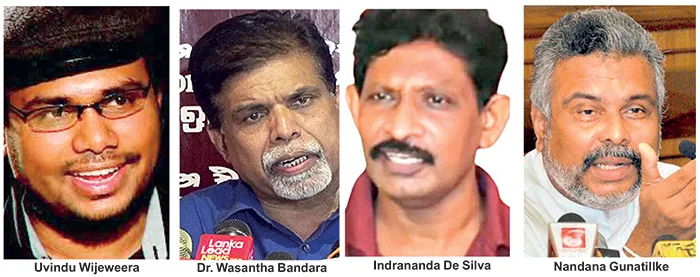
Former President Ranil Wickremesinghe’s recent combative ‘Head-to-Head’ interview with British-American Mehdi Hasan on Al Jazeera has opened a can of worms. As to why Hasan raised the Batalanda Presidential Commission report, during a 49-minute interview conducted at the London’s Conway Hall, with a clearly pro LTTE audience, remains a mystery. This must be yet another notorious way to show how even-handed they are as in the case of its coverage of Russia, China, Palestine or Ukraine for their gullible viewers.
Recorded in February and aired in March 2025, the interview is definitely the most controversial the UNP leader, who is also an Attorney-at-Law, ever faced during his political career; always used to getting kid glove treatment, especially after taking over the party in 1994.
The continuing public discourse on Batalanda should provoke a wider discussion on Sri Lanka’s response to separatist Tamil terrorism, since the cold blooded murder of Jaffna SLFP Mayor Alfred Duriappah, which signalled the beginning of the LTTE terror campaign that ended in May 2009 with the crushing military defeat of the Tigers on the banks of the Nathikadal lagoon, as well as two southern insurgencies in 1971 and 1987-1990.
As Nandana Gunatilleke (one time JVP General Secretary and ex-MP), Dr. Wasantha Bandara (ex-JVPer and close associate of the slain JVP leader Rohana Wijeweera), Indrananda de Silva (ex-JVPer, incumbent Central Committee member of Frontline Socialist Party [FSP] and ex-military photographer) and Uvindu Wijeweera (Rohana Wijeweera’s son and leader of Dewana Parapura) agreed during the recent Hiru ‘Balaya’ discussion, conducted by Madushan de Silva, the Batalanda operation was in line with the overall counter-terrorist/insurgency strategy of the then government.
The issues at hand cannot be discussed at all without taking into consideration the JVP terrorism that, at one-time, almost overwhelmed the UNP’s unbroken rule, since 1977, carried out while openly brushing aside most of the universally accepted genuine parliamentary norms. The country’s second Republican constitution, promulgated by the UNP regime with a 5/6 majority in Parliament, in 1978, had been amended no less than 13 times by the time they were finally ousted in 1995. This was mainly to facilitate their continuous rule. Unfortunately, all stakeholders have sought to take advantage of Batalanda, thereby preventing a proper dialogue. Quite surprisingly, none of the guests, nor the interviewer, bothered, at least, to make a reference to the JVP bid on President J.R. Jayewardene’s life in Parliament on the morning of July 18, 1987. At the time, JVPer Ajith Kumara, working in the House as a minor employee, hurled two hand grenades towards JRJ, with the then Prime Minister Ranasinghe Premadasa seated next to JRJ. While one government MP lost his life, several others suffered injuries, including then National Security Minister Lalith Athulathmudali, whose spleen had to be removed.
At one point, Gunatilleke declared that they assassinated UNP MP for Tangalle Jinadasa Weerasinghe on July 3, 1987, in response to the government killing well over 100 people, in Colombo, protesting against the signing of the Indo-Lanka accord on July 29, 1987. The parliamentarian was killed near the Barawakumbuka-Welangahawela bridge on the Colombo-Rathnapura-Embilipitiya Road. The UNPer was killed on his way home after having declined Premier Premadasa’s offer to make an SLAF chopper available for him to reach home safely.
Against the backdrop of MP Weerasinghe’s assassination and the grenade attack on the UNP parliamentary group that claimed the life of Keethi Abeywickrema (MP for Deniyaya), the government had no option but to respond likewise. The operation, established at the Batalanda Housing scheme of the State Fertiliser Corporation, constituted part of the counter-insurgency strategy pursued by the UNP.
Those who called Batalanda complex Batalanda torture camp/ wadakagaraya conveniently forgot during the second JVP inspired insurgency, the military had to utilize many public buildings, including schools, as makeshift accommodation for troops. Of course the UNP established Batalanda under different circumstances with the then Industries Minister Ranil Wickremesinghe providing political authority. Batalanda had been an exclusive police operation though the Army had access to it whenever a requirement arose.
Those who had been suddenly withdrawn from the Northern and Eastern Provinces, to meet the rapidly evolving security threat in the South, required accommodation. FSP CC member Indrananada de Silva had received unhindered access to Batalanda in his capacity as a military photographer and the rest is history.
As to why Indrananda de Silva switched his allegiance to the FSP should be examined, taking into consideration his previous role as a trusted military photographer, formerly a Lance Corporal of the Military Police. An influential section of the JVP, led by Kumar Gunaratnam, formed the FSP in April 2012 though it didn’t receive the much anticipated public support. Both Indrananda de Silva and Nandana Gunatilleke, who aligned himself with the UNP, found fault with the JVP-led National People’s Power (NPP) over its handling of the Batalanada issue.
Paramilitary operations
Paramilitary operations had been an integral part of the overall counter-insurgency campaign, directed at the JVP responsible for approximately 6,600 killings. Among those death squads were PRRA primarily drawn from the SLMP (Sri Lanka Mahajana Party) and SRRA (the socialist Revolutionary Red Army). PRRA had close links with the Independent Student Union (ISU) whose leader Daya Pathirana was slain by the JVP. The vast majority of people do not remember that Daya Pathirana, who led the ISU during the turbulent 1985-1986 period, was killed mid-Dec. 1989. The second insurgency hadn’t started at that time though the JVP propagated the lie that they took up arms against the UNP government following the signing of the Indo-Lanka peace accord on July 29, 1987.
In addition to PRRA and SRRA, the government made use of paramilitary groups, namely Kalu balallu, Ukkusso, Rajaliyo, Kaha balallu, Kola koti, Rathu Makaru, Mapila, Gonussa, Nee, Keshara Sinhayo, Le-mappillu and Kalu koti.
The UNP also involved some elements of Indian trained Tamil groups (not of the LTTE) in paramilitary operations. Such operations, that had been backed by respective Cabinet Ministers, were supervised by local law enforcement authorities. Paramilitary operations had been in line with psychological warfare that was meant to cause fear among the JVP, as well as the general population. Military operations that had been combined with paramilitary actions received the blessings of the political leadership at the highest level. In the case of Batalanda (1988-1990) President J.R. Jayewardene and Ranasinghe Premadasa knew of its existence.
Even after the eradication of the top JVP leadership, by Nov. 1989, police, military and paramilitary operations continued unabated. Former JVPers appearing on ‘Balaya’ agreed that counter-insurgency operations were actually brought to an end only after D.B. Wijetunga succeeded President Ranasinghe Premadasa after the latter’s assassination on May Day 1993.
After the LTTE resumed war in June 1990, just a couple of months after the withdrawal of the Indian Army (July 1987-March1990), the UNP authorized paramilitary operations in the northern and eastern areas. Members of TELO, PLOTE, EPRLF as well as EPDP were made part of the overall government security strategy. They operated in large groups. Some paramilitary units were deployed in the Jaffna islands as well. And these groups were represented in Parliament. They enjoyed privileged status not only in the northern and eastern regions but Colombo as well. The government allowed them to carry weapons in the city and its suburbs.
These groups operated armed units in Colombo. The writer had the opportunity to visit EPDP and PLOTE safe houses in Colombo and its suburbs soon after they reached an understanding with President Ranasinghe Premadasa. Overnight at the behest of President Premadasa, the Election Department granted these Tamil groups political recognition. In other words, armed groups were made political parties. The Premadasa government accepted their right to carry weapons while being represented in Parliament.
It would be pertinent to mention that thousands of Tamil paramilitary personnel served the government during that period. There had been many confrontations between them and the LTTE over the years and the latter sought to eliminate key paramilitary personnel. Let me remind you of the circumstances, the EPRLF’s number 02 Thambirajah Subathiran alias Robert was sniped to death in June 2003. Robert was engaged in routine morning exercises on the top floor of the two-storeyed EPRLF office, on the hospital road, Jaffna, when an LTTE sniper took him out from the nearby Vembadi Girls’ high school. The operation of the Norway managed Ceasefire Agreement (CFA) made no difference as the LTTE removed Robert who led the party here in the absence of leader Varatharaja Perumal, the first and the only Chief Minister of the North-Eastern Province.
In terms of the CFA that had been signed by Premier Ranil Wickremesinghe and LTTE leader Velupillai Prabhakaran, in Feb. 2002, the government agreed to disarm all paramilitary personnel. Many wouldn’t remember now that during Premadasa’s honeymoon with the LTTE, the Army facilitated the LTTE onslaught on paramilitary groups in selected areas.
Muthaliff’s role
During the ‘Balaya’ discussion, the contentious issue of who shot JVP leader Rohana Wijeweera came up. Nandana Gunatilleke, who contested the 1999 Dec. presidential election. as the JVP candidate, pointing to an article carried in the party organ that dealt with Wijeweera’s assassination said that he wrongly named Gaffoor as one of the persons who shot their leader whereas the actual shooter was Muthaliff. The headline named Thoradeniya and Gaffoor as the perpetrators.
Declaring that he personally wrote that article on the basis of information provided by Indrananda de Silva, Gunatilleke named Asoka Thoradeniya and Tuan Nizam Muthaliff of the Army as the perpetrators of the crime. Thoradeniya served as Sri Lanka’s High Commissioner in the Maldives during the Yahapalana administration, while Muthaliff was killed by the LTTE in Colombo in late May 2005. The shooting took place at Polhengoda junction, Narahenpita. Muthaliff was on his way from Manning town, Narahenpita, to the Kotelawala Defence University.
The programme was told that the JVP had over the years developed close relationship with Thoradeniya while Indrananda de Silva accused Dr. Wasantha Bandara of duplicity regarding Muthaliff. How could you recognize Muthaliff, slain by the LTTE, as a war hero as he was actually one of the persons who shot Rohana Wijeweera, the latter asked.
At the time of his assassination, Muthaliff served as the Commanding Officer, 1 st Regiment Sri Lanka Military Intelligence Corps. The then parliamentarian Wimal Weerawansa was among those who paid last respects to Maj. Muthaliff.
At the time of Rohana Wijeweera’s arrest, Muthaliff served as Lieutenant while Thoradeniya was a Major. Indrananda de Silva strongly stressed that atrocities perpetrated by the police and military in the South or in the northern and eastern regions must be dealt with regardless of whom they were conducting operations against. The former JVPer recalled the Army massacre in the east in retaliation for the landmine blast that claimed the lives of Northern Commander Maj. Gen. Denzil Kobbekaduwa and a group of senior officers, including Brigadier Wijaya Wimalaratne, in early Aug. 1990 in Kayts.
Dr. Wasantha Bandara warned of the Western powers taking advantage of what he called false narrative to push for a Truth and Reconciliation Commission.
It would be pertinent to mention that the LTTE also used the underworld as well as some corrupt Army personnel in planning high profile assassinations. Investigations into the assassination of Muthaliff, as well as Maj. Gen. Parami Kulatunga, killed in a suicide attack at Pannipitiya, in June 2006, revealed the direct involvement of military personnel with the LTTE.
Indrananda de Silva disclosed that soon after Anura Kumara Dissanayake won the presidential election last September, the FSP, in writing, requested the JVP leader to inquire into killings during that period, including that of Rohana Wijeweera. The FSPer alleged that President Dissanayake refrained from even acknowledging their letter. Indrananda de Silva emphasized that Al Jazeera never disclosed anything new as regards Batalanda as he exposed the truth years ago. The former JVPer ridiculed the ruling party tabling the Batalanda Commission report in the wake of Wickremesinghe’s Al Jazeera interview whereas the matter was in the public domain for quite some time.
Indrananda de Silva and Nandana Gunatilleke exchanged words over the latter’s declaration that the JVP, too, was subjected to investigation for violence unleashed during the 1987-1990 period. While the FSPer repeatedly declared that those who carried out directives issued by the party were arrested and in some cases killed, Nandana Gunatilleke took up the position that the party should be held accountable for crimes perpetrated during that period.
The interviewer posed Nandana Gunatilleke the question whether he was betraying his former comrades after joining the UNP. Nandana Gunatilleke shot back that he joined the UNP in 2015 whereas the JVP joined UNP as far back as 2009 to promote retired Army Chef Sarath Fonseka’s presidential ambition even though he wiped out the JVP presence in Trincomalee region during the second insurgency.
JVP’s accountability
Nandana Gunatilleke is adamant that the party should accept responsibility for the killings carried out at that time. The former JVPer declared that Vijaya Kumaratunga (Feb. 16, 1988), first Vice Chancellor of the Colombo University (March 08, 1989) Dr. Stanley Wijesundera, Ven. Kotikawatte Saddhatissa thera (Aug. 03, 1988) and Chairperson of the State Pharmaceutical Corporation Gladys Jayewardene (Sept. 12, 1989) were among those assassinated by the JVP. SPC Chairperson was killed for importing medicine from India, the former Marxist aligned with the UNP said, while actor-turned-politician Kumaratunga’s assassination was attributed to his dealings with President J.R. Jayewardene.
According to Nandana Gunatilleke, except for a few killings such as General Secretaries of the UNP Harsha Abeywickrema (Dec 23, 1987) and Nandalal Fernando (May 20, 1988), the vast majority of others were ordinary people like grama sevakas killed on mere accusation of being informants. The deaths were ordered on the basis of hearsay, Nandana Gunatilleke said, much to the embarrassment of others who represented the interest of the JVP at that time.
One quite extraordinary moment during the ‘Balaya’ programme was when Nandana Gunatilleke revealed their (JVP’s) direct contact with the Indian High Commission at a time the JVP publicly took an extremely anti-Indian stance. In fact, the JVP propagated a strong anti-Indian line during the insurgency. Turning towards Dr. Wasantha Bandara, Gunatilleke disclosed that both of them had been part of the dialogue with the Indian High Commission.
It reminds me of the late Somawansa Amarasinghe’s first public address delivered at a JVP rally in late Nov. 2001 after returning home from 12 years of self-imposed exile. Of the top JVP leadership, Somawansa Amarasinghe, who had been married to a close relative of powerful UNP Minister Sirisena Cooray, was the only one to survive combined police/military/paramilitary operations.
Amarasinghe didn’t mince his words when he declared at a Kalutara rally that his life was saved by Indian Premier V.P. Singh. Soft spoken Amarasinghe profusely thanked India for saving his life. Unfortunately, those who discuss issues at hand conveniently forget crucial information in the public domain. Such lapses can be both deliberate and due to negligence.
By Shamindra Ferdinando
Midweek Review
Independent Monitor
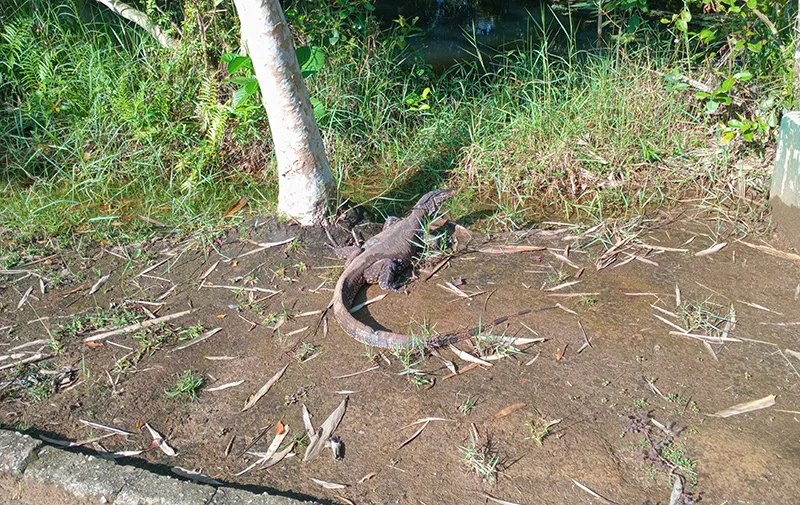
You may think sloth comes very easy,
To your kingly monitor of the shrinking marsh,
As he lies basking smugly in the morn sun,
But he is organized and alert all the while,
As he awaits his prey with patience infinite,
Free of malice, a professional of a kind,
His cumbrous body not slowing his sprite….
But note, he’s no conspirator spitting guile,
And doesn’t turn nasty unless crossed,
Nor by vengeful plans is he constantly dogged,
Unlike those animals of a more rational kind,
Whose ways have left behind a state so sorry.
By Lynn Ockersz
Midweek Review
Rajiva on Batalanda controversy, govt.’s failure in Geneva and other matters

Former President Ranil Wickremesinghe’s recent interview with Mehdi Hasan on Al Jazeera’s ‘Head-to-Head’ series has caused controversy, both in and outside Parliament, over the role played by Wickremesinghe in the counter-insurgency campaign in the late’80s.
The National People’s Power (NPP) seeking to exploit the developing story to its advantage has ended up with egg on its face as the ruling party couldn’t disassociate from the violent past of the JVP. The debate on the damning Presidential Commission report on Batalanda, on April 10, will remind the country of the atrocities perpetrated not only by the UNP, but as well as by the JVP.
The Island sought the views of former outspoken parliamentarian and one-time head of the Government Secretariat for Coordinating the Peace Process (SCOPP) Prof. Rajiva Wijesinha on a range of issues, with the focus on Batalanda and the failure on the part of the war-winning country to counter unsubstantiated war crimes accusations.
Q:
The former President and UNP leader Ranil Wickremesinghe’s interview with Al Jazeera exposed the pathetic failure on the part of Sri Lanka to address war crimes accusations and accountability issues. In the face of aggressive interviewer Mehdi Hasan on ‘Head-to-Head,’ Wickremesinghe struggled pathetically to counter unsubstantiated accusations. Six-time Premier Wickremesinghe who also served as President (July 2022-Sept. 2024) seemed incapable of defending the war-winning armed forces. However, the situation wouldn’t have deteriorated to such an extent if President Mahinda Rajapaksa, who gave resolute political leadership during that war, ensured a proper defence of our armed forces in its aftermath as well-choreographed LTTE supporters were well in place, with Western backing, to distort and tarnish that victory completely. As wartime Secretary General of the Government’s Secretariat for Coordinating the Peace Process (since June 2007 till the successful conclusion of the war) and Secretary to the Ministry of Disaster Management and Human Rights (since Jun 2008) what do you think of Wickremesinghe’s performance?
A:
It made him look very foolish, but this is not surprising since he has no proper answers for most of the questions put to him. Least surprising was his performance with regard to the forces, since for years he was part of the assault forces on the successful Army, and expecting him to defend them is like asking a fox to stand guard on chickens.
Q:
In spite of trying to overwhelm Wickremesinghe before a definitely pro-LTTE audience at London’s Conway Hall, Hasan further exposed the hatchet job he was doing by never referring to the fact that the UNP leader, in his capacity as the Yahapalana Premier, co-sponsored the treacherous Geneva Resolution in Oc., 2015, against one’s own victorious armed forces. Hasan, Wickremesinghe and three panelists, namely Frances Harrison, former BBC-Sri Lanka correspondent, Director of International Truth and Justice Project and author of ‘Still Counting the Dead: Survivors of Sri Lanka’s Hidden War,’ Dr. Madura Rasaratnam, Executive Director of PEARL (People for Equality and Relief in Lanka) and former UK and EU MP and Wickremesinghe’s presidential envoy, Niranjan Joseph de Silva Deva Aditya, never even once referred to India’s accountability during the programme recorded in late February but released in March. As a UPFA MP (2010-2015) in addition to have served as Peace Secretariat Chief and Secretary to the Disaster Management and Human Rights Ministry, could we discuss the issues at hand leaving India out?
A:
I would not call the interview a hatchet job since Hasan was basically concerned about Wickremesinghe’s woeful record with regard to human rights. In raising his despicable conduct under Jayewardene, Hasan clearly saw continuity, and Wickremesinghe laid himself open to this in that he nailed his colours to the Rajapaksa mast in order to become President, thus making it impossible for him to revert to his previous stance. Sadly, given how incompetent both Wickremesinghe and Rajapaksa were about defending the forces, one cannot expect foreigners to distinguish between them.
Q:
You are one of the many UPFA MPs who backed Maithripala Sirisena’s candidature at the 2015 presidential election. The Sirisena-Wickremesinghe duo perpetrated the despicable act of backing the Geneva Resolution against our armed forces and they should be held responsible for that. Having thrown your weight behind the campaign to defeat Mahinda Rajapaksa’s bid to secure a third term, did you feel betrayed by the Geneva Resolution? And if so, what should have the Yahapalana administration done?
A:
By 2014, given the total failure of the Rajapaksas to deal firmly with critiques of our forces, resolutions against us had started and were getting stronger every year. Mahinda Rajapaksa laid us open by sacking Dayan Jayatilleke who had built up a large majority to support our victory against the Tigers, and appointed someone who intrigued with the Americans. He failed to fulfil his commitments with regard to reforms and reconciliation, and allowed for wholesale plundering, so that I have no regrets about working against him at the 2015 election. But I did not expect Wickremesinghe and his cohorts to plunder, too, and ignore the Sirisena manifesto, which is why I parted company with the Yahapalanaya administration, within a couple of months.
I had expected a Sirisena administration to pursue some of the policies associated with the SLFP, but he was a fool and his mentor Chandrika was concerned only with revenge on the Rajapaksas. You cannot talk about betrayal when there was no faith in the first place. But I also blame the Rajapaksas for messing up the August election by attacking Sirisena and driving him further into Ranil’s arms, so that he was a pawn in his hands.
Q:
Have you advised President Mahinda Rajapaksa’s government how to counter unsubstantiated war crimes allegations propagated by various interested parties, particularly the UN, on the basis of the Panel of Experts (PoE) report released in March 2011? Did the government accept your suggestions/recommendations?
A:
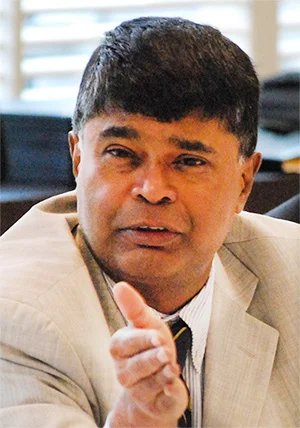
Prof. Rajiva Wijesinha
I kept trying, but Mahinda was not interested at all, and had no idea about how to conduct international relations. Sadly, his Foreign Minister was hanging around behind Namal, and proved incapable of independent thought, in his anxiety to gain further promotion. And given that I was about the only person the international community, that was not prejudiced, took seriously – I refer to the ICRC and the Japanese with whom I continued to work, and, indeed, the Americans, until the Ambassador was bullied by her doctrinaire political affairs officer into active undermining of the Rajapaksas – there was much jealousy, so I was shut out from any influence.
But even the admirable effort, headed by Godfrey Gunatilleke, was not properly used. Mahinda Rajapaksa seemed to me more concerned with providing joy rides for people rather than serious counter measures, and representation in Geneva turned into a joke, with him even undermining Tamara Kunanayagam, who, when he supported her, scored a significant victory against the Americans, in September 2011. The Ambassador, who had been intriguing with her predecessor, then told her they would get us in March, and with a little help from their friends here, they succeeded.
Q:
As the writer pointed out in his comment on Wickremesinghe’s controversial Al Jazeera interview, the former Commander-in-Chief failed to mention critically important matters that could have countered Hasan’ s line of questioning meant to humiliate Sri Lanka?
A:
How could you have expected that, since his primary concern has always been himself, not the country, let alone the armed forces?
Q:
Do you agree that Western powers and an influential section of the international media cannot stomach Sri Lanka’s triumph over separatist Tamil terrorism?
A:
There was opposition to our victory from the start, but this was strengthened by the failure to move on reconciliation, creating the impression that the victory against the Tigers was seen by the government as a victory against Tamils. The failure of the Foreign Ministry to work with journalists was lamentable, and the few exceptions – for instance the admirable Vadivel Krishnamoorthy in Chennai or Sashikala Premawardhane in Canberra – received no support at all from the Ministry establishment.
Q:
A couple of months after the 2019 presidential election, Gotabaya Rajapaksa declared his intention to withdraw from the Geneva process. On behalf of Sri Lanka that announcement was made in Geneva by the then Foreign Minister Dinesh Gunawardena, who became the Premier during Wickremesinghe’s tenure as the President. That declaration was meant to hoodwink the Sinhala community and didn’t alter the Geneva process and even today the project is continuing. As a person who had been closely involved in the overall government response to terrorism and related matters, how do you view the measures taken during Gotabaya Rajapaksa’s short presidency to counter Geneva?
A:
What measures? I am reminded of the idiocy of the responses to the Darusman report by Basil and Gotabaya Rajapaksa, who went on ego trips and produced unreadable volumes trying to get credit for themselves as to issues of little interest to the world. They were planned in response to Darusman, but when I told Gotabaya that his effort was just a narrative of action, he said that responding to Darusman was not his intention. When I said that was necessary, he told me he had asked Chief-of-Staff Roshan Goonetilleke to do that, but Roshan said he had not been asked and had not been given any resources.
My own two short booklets which took the Darusman allegations to pieces were completely ignored by the Foreign Ministry.
Q:
Against the backdrop of the Geneva betrayal in 2015 that involved the late Minister Mangala Samaraweera, how do you view President Wickremesinghe’s response to the Geneva threat?
A: Wickremesinghe did not see Geneva as a threat at all. Who exactly is to blame for the hardening of the resolution, after our Ambassador’s efforts to moderate it, will require a straightforward narrative from the Ambassador, Ravinatha Ariyasinha, who felt badly let down by his superiors. Geneva should not be seen as a threat, since as we have seen follow through is minimal, but we should rather see it as an opportunity to put our own house in order.
Q:
President Anura Kumara Dissanayake recently questioned both the loyalty and professionalism of our armed forces credited with defeating Northern and Southern terrorism. There hadn’t been a previous occasion, a President or a Premier, under any circumstances, questioned the armed forces’ loyalty or professionalism. We cannot also forget the fact that President Dissanayake is the leader of the once proscribed JVP responsible for death and destruction during 1971 and 1987-1990 terror campaigns. Let us know of your opinion on President Dissanayake’s contentious comments on the armed forces?
A: I do not see them as contentious, I think what is seen as generalizations was critiques of elements in the forces. There have been problems, as we saw from the very different approach of Sarath Fonseka and Daya Ratnayake, with regard to civilian casualties, the latter having planned a campaign in the East which led to hardly any civilian deaths. But having monitored every day, while I headed the Peace Secretariat, all allegations, and obtained explanations of what happened from the forces, I could have proved that they were more disciplined than other forces in similar circumstances.
The violence of the JVP and the LTTE and other such groups was met with violence, but the forces observed some rules which I believe the police, much more ruthlessly politicized by Jayewardene, failed to do. The difference in behaviour between the squads led for instance by Gamini Hettiarachchi and Ronnie Goonesinghe makes this clear.
Q:
Mehdi Hasan also strenuously questioned Wickremesinghe on his role in the UNP’s counter-terror campaign during the 1987-1990 period. The British-American journalists of Indian origins attacked Wickremesinghe over the Batalanda Commission report that had dealt with extra-judicial operations carried out by police, acting on the political leadership given by Wickremesinghe. What is your position?
A:
Wickremesinghe’s use of thugs’ right through his political career is well known. I still recall my disappointment, having thought better of him, when a senior member of the UNP, who disapproved thoroughly of what Jayewardene had done to his party, told me that Wickremesinghe was not honest because he used thugs. In ‘My Fair Lady,’ the heroine talks about someone to whom gin was mother’s milk, and for Wickremesinghe violence is mother’s milk, as can be seen by the horrors he associated with.
The latest revelations about Deshabandu Tennakoon, whom he appointed IGP despite his record, makes clear his approval for extra-judicial operations.
Q:
Finally, will you explain how to counter war crimes accusations as well as allegations with regard to the counter-terror campaign in the’80s?
A:
I do not think it is possible to counter allegations about the counter-terror campaign of the eighties, since many of those allegations, starting with the Welikada Prison massacre, which Wickremesinghe’s father admitted to me the government had engendered, are quite accurate. And I should stress that the worst excesses, such as the torture and murder of Wijeyedasa Liyanaarachchi, happened under Jayewardene, since there is a tendency amongst the elite to blame Premadasa. He, to give him his due, was genuine about a ceasefire, which the JVP ignored, foolishly in my view though they may have had doubts about Ranjan Wijeratne’s bona fides.
With regard to war crimes accusations, I have shown how, in my ‘Hard Talk’ interview, which you failed to mention in describing Wickeremesinghe’s failure to respond coherently to Hasan. The speeches Dayan Jayatilleke and I made in Geneva make clear what needed and still needs to be done, but clear sighted arguments based on a moral perspective that is more focused than the meanderings, and the frequent hypocrisy, of critics will not now be easy for the country to furnish.
By Shamindra Ferdinando
-
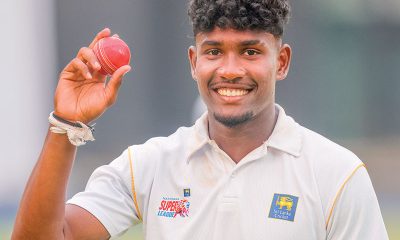
 Sports2 days ago
Sports2 days agoSri Lanka’s eternal search for the elusive all-rounder
-

 Features6 days ago
Features6 days agoCelebrating 25 Years of Excellence: The Silver Jubilee of SLIIT – PART I
-

 Business6 days ago
Business6 days agoCEB calls for proposals to develop two 50MW wind farm facilities in Mullikulam
-
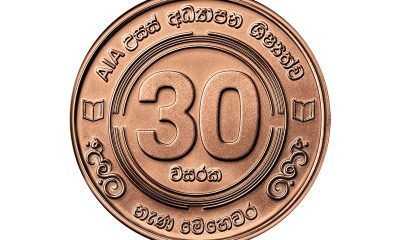
 Business4 days ago
Business4 days agoAIA Higher Education Scholarships Programme celebrating 30-year journey
-
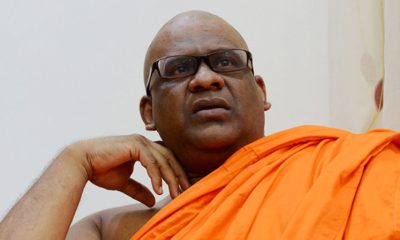
 News3 days ago
News3 days agoGnanasara Thera urged to reveal masterminds behind Easter Sunday terror attacks
-
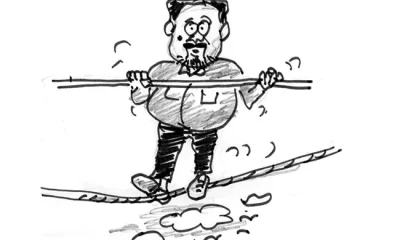
 Features6 days ago
Features6 days agoNotes from AKD’s Textbook
-
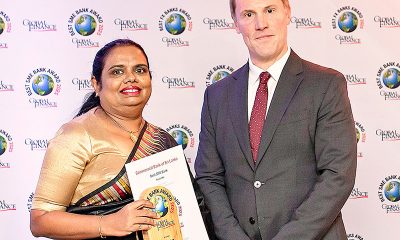
 News2 days ago
News2 days agoComBank crowned Global Finance Best SME Bank in Sri Lanka for 3rd successive year
-
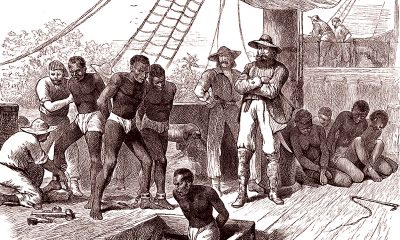
 Features2 days ago
Features2 days agoSanctions by The Unpunished











